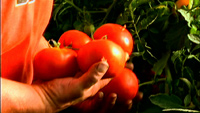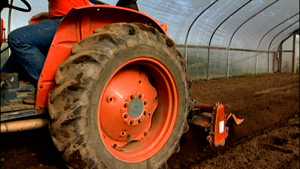This story is about a farmer that builds a bridge (metaphorically speaking) from his fields to the school lunchroom cafeterias. In the process, fresh, and wholesome foods are provided to growing kids, and a small local food economy develops. This is part of a growing trend across the country.
Okay, if you’ve been following along, you know I like to see how things work…it satisfies the engineer in me (thanks, Dad!). And, I love to garden, cook from scratch, participate in my community, work toward leaving a smaller carbon footprint…did I say anything about my kids yet? 3 of them. All boys. All healthy eaters. And, all in school.
Which leads me to the current story about the importance of teaching our kids about where our food comes from, that it doesn’t come from just a grocery store, it doesn’t come along with the ‘free’ toy, and it doesn’t just miraculously appear on their plate full of wholesome goodness and taste. A lot of work goes into bringing our food to our table. And, most of us know about the challenges of putting together a well-balanced meal, day-after-day.
The National Farm to School Network is an ongoing grassroots effort to build a local food economy, a bridge between the farmer in the field and the student in the cafeteria. Kids are beginning to learn that broccoli actually tastes good, and administrators are learning that kids will eat healthy foods when they are fresh and taste good. When you factor in possible healthcare costs down the road, from diet-related illnesses, everyone wins: fresh, healthier food for school kids, support for local farmers, and less food waste at school.
Now, just imagine, if you are the lunch lady at school and you have thousands of hungry kids filing into the cafeteria that are yammerin’ for something good to eat. You’re hoping good healthy food, and the kids are probably just hoping for it to be good tasting!
Why not both?
Which takes me to the farmer, who may grow fresh fruits, vegetables, or raise chickens and eggs, pasture feed their cattle, pigs, and maybe make cheese or pickles too. There’s a good chance, if they are a ‘small’ farmer, they are looking for many different markets to sell their food. This is the basis of a local food economy, where the farmer supplies a valuable commodity and service, and the community, as a whole, benefits not just financially but in broad sustainable terms: promoting a healthier environment, strengthening the sense of community, and encouraging healthier eating habits.
Recipes from this show: Pickled Green Beans; Yogurt Smoothie
Most of the videos featured on Cooking Up a Story were produced, filmed, and edited by Rebecca Gerendasy. Fred Gerendasy contributed as a writer to many of the posts and occasionally as the interviewer. Visit Rebecca Gerendasy Clay – Art and Fred Gerendasy Photography to see their current work.


